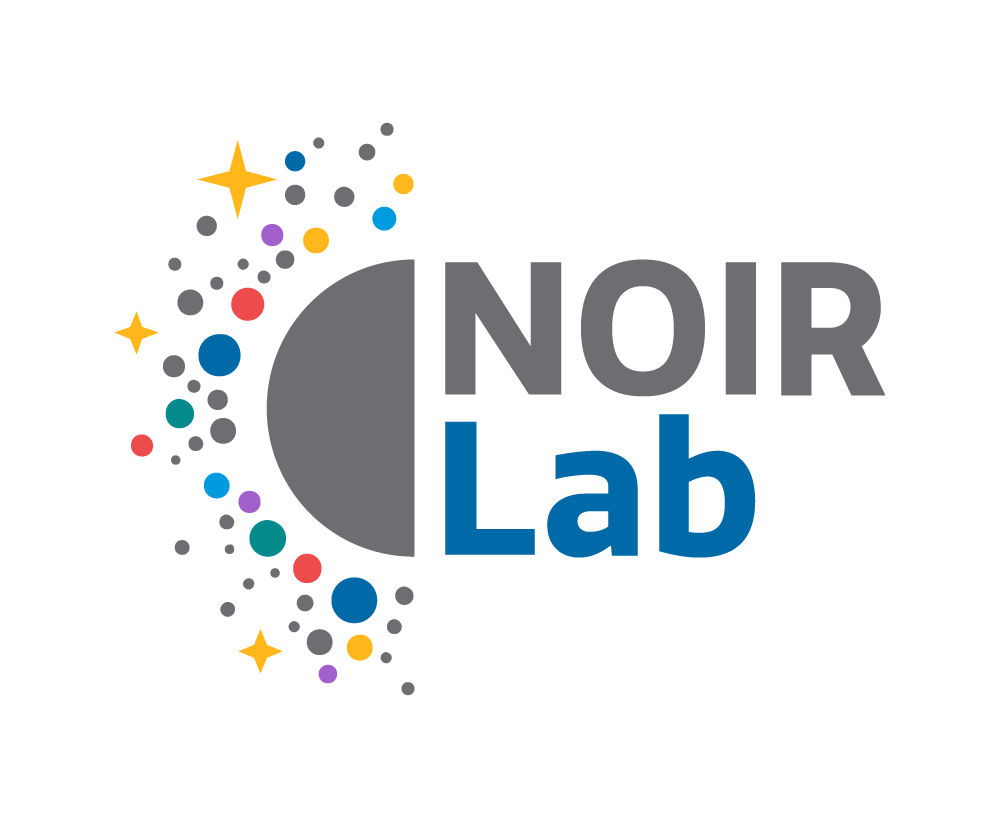NOIRLab Nuggets: DESI Sheds Light On Dark Energy
2 May 2025
Dark energy is one of the most mysterious forces in the Universe. Its discovery was announced in 1998 when two groups of astronomers published their findings on the expansion history of the Universe. Much to the surprise of astronomers, the expansion of the Universe was accelerating. The mysterious force that drives this acceleration was given the name dark energy.
To study dark energy, astronomers wanted to measure how fast tens of millions of different galaxies are moving away from us. By looking at galaxies at different distances and knowing their recessional velocities, astronomers can study the behavior of the Universe’s expansion rate over time.
Measuring the recessional velocities of tens of millions of galaxies requires a special instrument — the Dark Energy Spectroscopic Instrument (DESI). DESI is a state-of-the-art spectrograph that can measure the recessional velocity of 5000 galaxies at once. DESI is installed on the U.S. National Science Foundation Nicholas U. Mayall Telescope at Kitt Peak National Observatory, a Program of NSF NOIRLab. The instrument is expected to measure the properties of 50 million galaxies and quasars (distant galaxies with massive black holes at their centers), and over 10 million stars.
DESI tracks the distribution of matter in the Universe at different times using Baryon Acoustic Oscillations (BAO). Baryons are just normal matter made of protons and neutrons. Shortly after the Big Bang, the Universe consisted of a hot plasma. Sound (acoustic) waves traveled through this plasma. Eventually the Universe cooled and the plasma became neutral atoms. At this point, the pattern of the acoustic waves became frozen into the distribution of matter. We can still see this pattern in the modern Universe by looking at the distribution of matter. By looking at the distribution of matter at different periods in the Universe’s history, we can measure how the expansion rate has changed over time.
The DESI Collaboration has recently released several papers analyzing the first three years of DESI data. The data are consistent with the standard model of cosmology, in which the Universe contains cold dark matter (matter we cannot see except through its gravitational influence) and a constant dark energy (called the cosmological constant). Further analysis combined DESI’s data with other datasets. The cosmic microwave background data give astronomers a glimpse of the Universe when it was only 380,000 years old. DESI scientists also analyzed Type 1a supernovae, which always explode with roughly the same brightness, and enable astronomers to determine the distances to galaxies, providing additional constraints in their analysis. Finally, they included a phenomenon called weak gravitational lensing, seeing how matter distorts the images of distant galaxies to map the distribution of matter in the Universe.
Combining all these datasets indicates that dark energy is not constant after all, and is actually getting weaker as time progresses. It is not excluded that it may weaken so much that it ultimately leads to gravity taking over, which could result in a contracting Universe in the future. This result differs from the standard model of cosmology which includes a constant dark energy. The statistical analysis is not quite strong enough to declare a definitive discovery but researchers are excited about these results. (Astronomers consider it a discovery if there is a 5-sigma statistical significance to the results. The current analysis puts the significance at between 2.8- and 4.2 sigma.)
The analysis of the data used a special technique to hide the results from researchers until the end of the process. This technique is intended to eliminate unconscious bias about the data and sets a new standard for how data from large spectroscopic data sets are analyzed.
The DESI collaboration will further analyze the first three years of DESI data using different techniques to extract even more information. DESI continues to collect data and will produce even more robust results when the Year 4 and 5 data are analyzed.
The DESI collaboration also issued Data Release 1 (DR1) for everyone to explore. DR1 contains all the data from the first year of the survey and the survey validation data.
Contacts
Rob Sparks
Senior Communications, Education and Engagement Specialist
NSF NOIRLab
Email: robert.sparks@noirlab.edu


